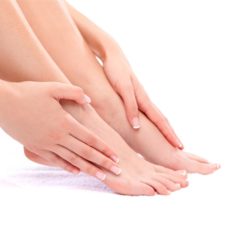
Your feet work very had each time you touch the ground, that is why each day new cracks on the skin are formed. And when skin is not properly moisturised, it becomes dry and rough. Your skin will get thick …

Your feet work very had each time you touch the ground, that is why each day new cracks on the skin are formed. And when skin is not properly moisturised, it becomes dry and rough. Your skin will get thick and develop cracks that are visible and become deeper over time – they may even reach the dermis. You will have wounds that are more likely to be penetrated by bacteria and viruses.
To remove cracks, you will need special products, such as urea- or glycolic acid- based creams. Once you mechanically remove the upper layer of the skin, apply a thicker layer of such a cream on heels and soles, massage in circular movements and put socks overnight. Cracks should disappear after a few days.
The most important about prophylaxis is to prevent any excessive skin build-up. Use a natural scrub and a flexible file (it is more gentle than the metal file and more hygienic than the pumice stone) on a regular basis, and apply moisturising and lipid-replenishing creams with shea butter, natural oils and urea. To promote everyday natural process of skin renewal, it is worth using SheFoot cracked and dry heel repair or 30% urea cracked heel extra plus repair. Their components are mainly to protect foot skin against water loss and prevent it from drying out and cracking.